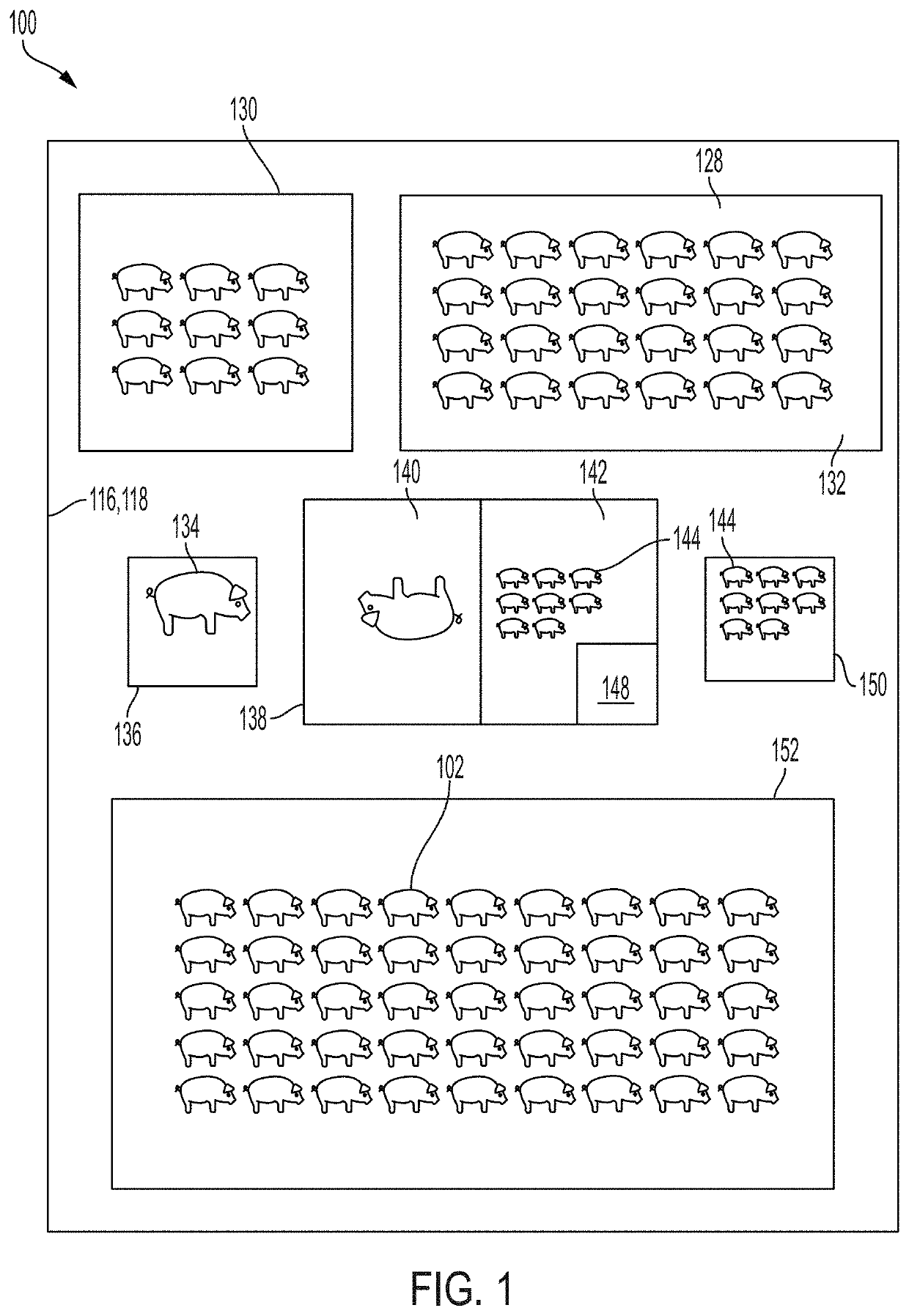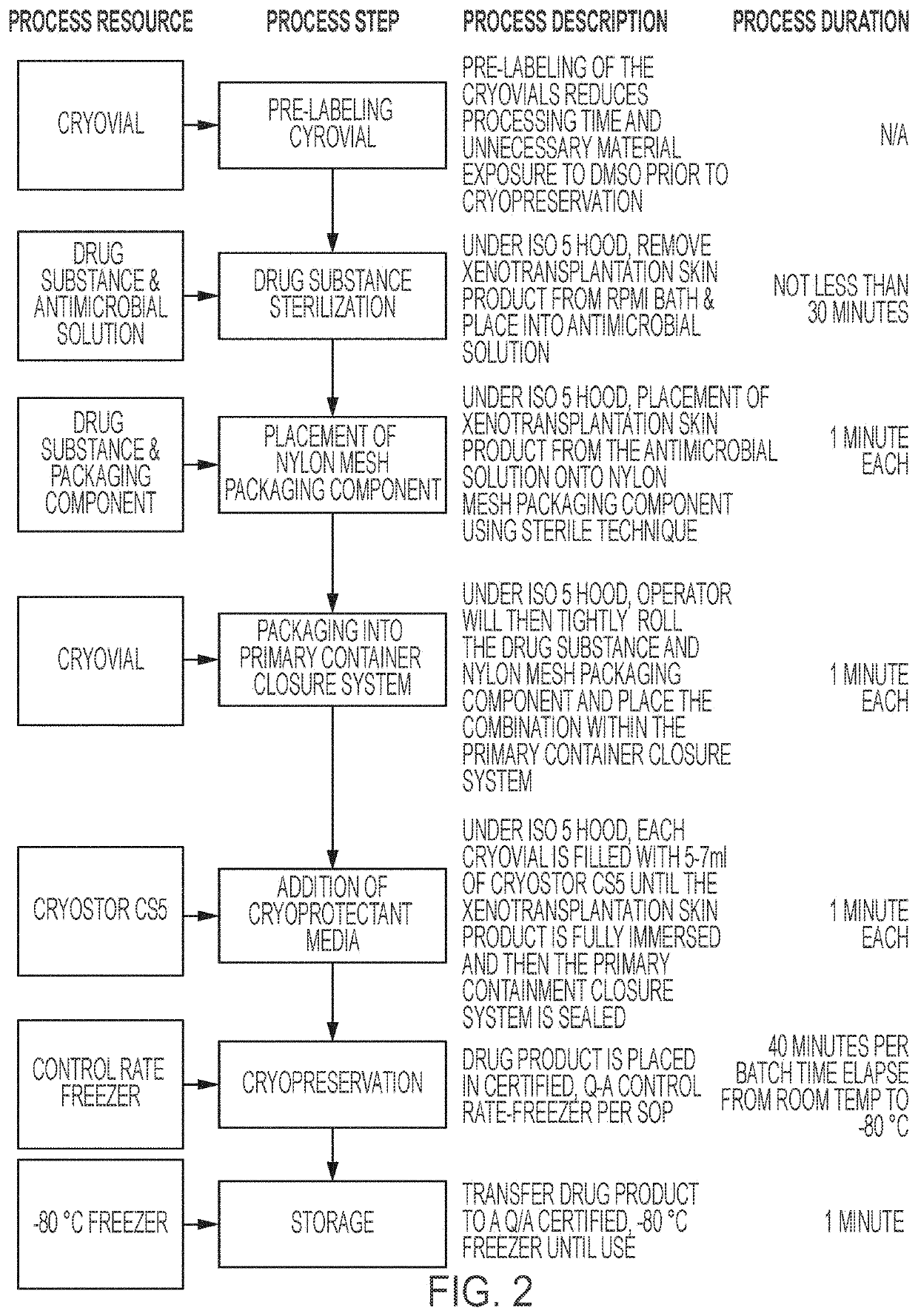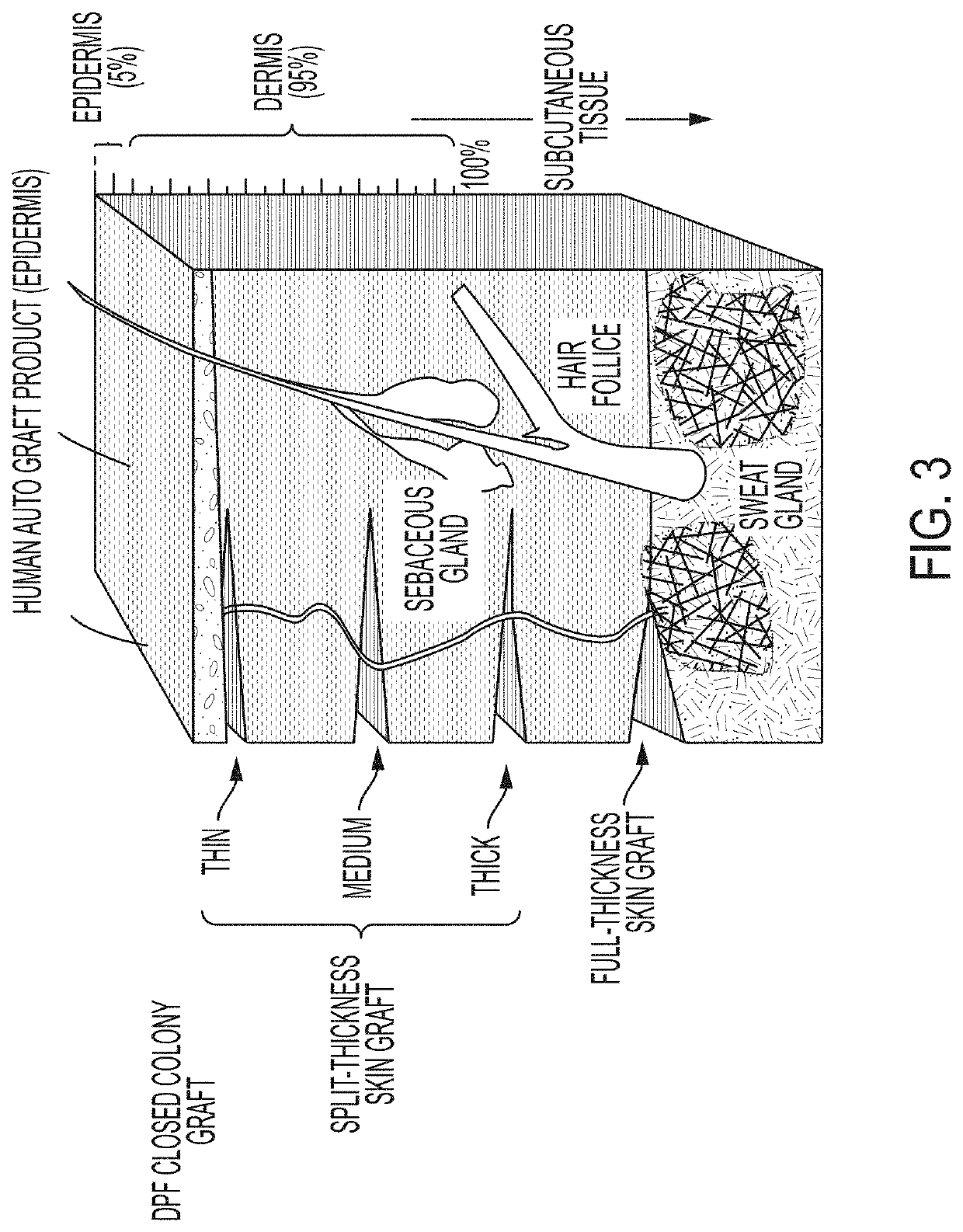Xenotransplantation products and methods
- Summary
- Abstract
- Description
- Claims
- Application Information
AI Technical Summary
Benefits of technology
Problems solved by technology
Method used
Image
Examples
example 1
DPF Closed Colony Skin Graft (Monkey Studies)
[0543]It has been discovered that skin grafts derived from a DPF Closed Colony, α-1,3-galactosyltransferase [Gal-T] knockout pigs produced in accordance with the present invention exhibit significantly longer rejection times than skin grafts derived from α-1,3-galactosyltransferase [Gal-T] knockout pigs but that were not derived from DPF Closed Colony pigs.
[0544]Numerous prior studies evaluating rejection time of α-1,3-galactosyltransferase [Gal-T] knockout pigs (not derived from a DPF Closed Colony) on monkeys show rejection times in the range of 11-13 days. See, e.g., Albritton et al., Lack of Cross-Sensitization Between alpha-1, 3-Galactosyltransferase Knockout Porcine and Allogeneic Skin Grafts Permits Serial Grafting, Transplantation & Volume 97, Number 12, Jun. 27, 2014, (Gal-T-KO skin grafts on recipient baboons fully rejected by 12 or 13 days); Barone et al., “Genetically modified porcine split-thickness skin grafts as an alternat...
example 2
[0564]The following example provides a description of a process of harvesting and processing skin from a designated pathogen free α-1,3-galactosyltransferase [Gal-T] knockout swine produced in accordance with the present invention, with the skin to be used as a xenogeneic skin product for human transplantation. In some of these aspects, the xenotransplantation product consists of split thickness grafts consisting of dermal and epidermal tissue layers containing vital, non-terminally sterilized porcine cells derived from specialized, genetically engineered, Designated Pathogen Free (DPF), source animals (alpha 1,3 galactosyltransferase knockout [Gal-T-KO] miniature swine).
[0565]The genetically engineered source animals in this example do not contain any foreign, introduced DNA into the genome; the gene modification employed is exclusively a knock-out of a single gene that was responsible for encoding for an enzyme that causes ubiquitous expression of a cell-surface antigen. The xenot...
example 3
Dermis Epidermus Combo Product
[0675]The following example provides a description of a skin product derived from a designated pathogen free α-1,3-galactosyltransferase [Gal-T] knockout swine for use in human transplantation produced in accordance with the present invention. The product, process and techniques disclosed herein are but examples, and do not limit the scope of the invention.
[0676]Some skin transplantation products for the treatment of burns and other ailments utilize cultured epidermal autografts (see, e.g., products produced by Vericel Corporation under the Epicel® brand name). Such epidermal autografts can be utilized for patients with burns (including severe burns) and result in reduced or no rejection in the transplanted epidermal material since the material is derived from the patient's own skin.
[0677]However, such products are limited to the epidermis only, and do not include the dermis portion of the skin. Referring to FIG. 3, it will be understood that the dermis...
PUM
| Property | Measurement | Unit |
|---|---|---|
| Fraction | aaaaa | aaaaa |
| Fraction | aaaaa | aaaaa |
| Fraction | aaaaa | aaaaa |
Abstract
Description
Claims
Application Information
 Login to View More
Login to View More - R&D
- Intellectual Property
- Life Sciences
- Materials
- Tech Scout
- Unparalleled Data Quality
- Higher Quality Content
- 60% Fewer Hallucinations
Browse by: Latest US Patents, China's latest patents, Technical Efficacy Thesaurus, Application Domain, Technology Topic, Popular Technical Reports.
© 2025 PatSnap. All rights reserved.Legal|Privacy policy|Modern Slavery Act Transparency Statement|Sitemap|About US| Contact US: help@patsnap.com



